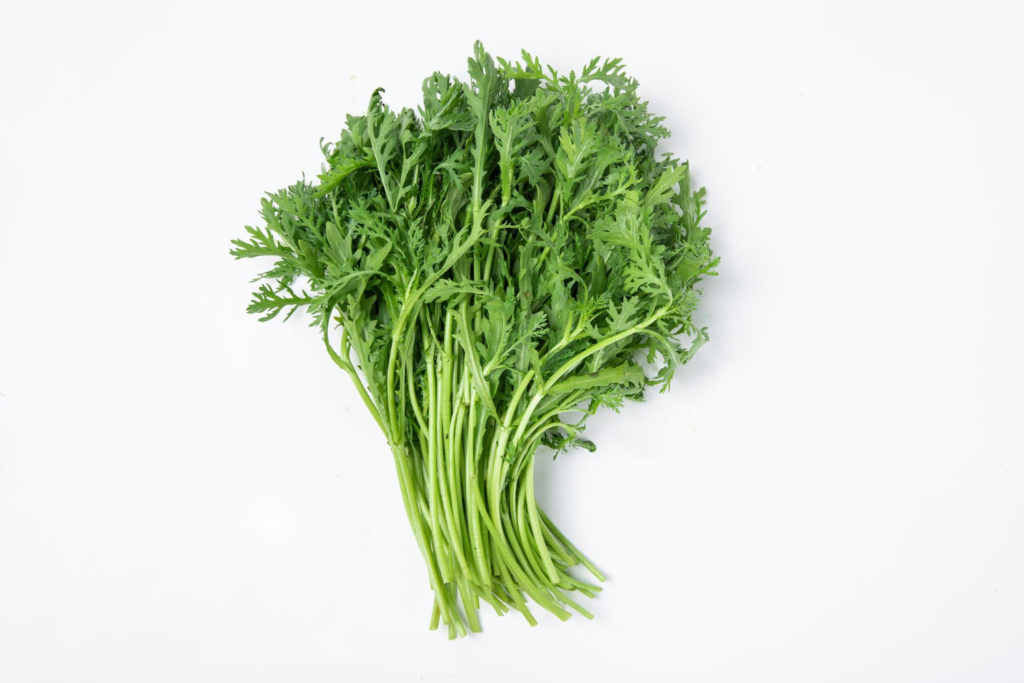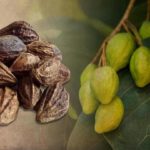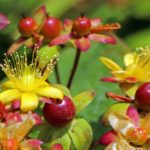
Caren Chen
(MMedSc, MACM, RWMC)
Mugwort leaves have a long history of use in traditional medicine. Today, studies have shown that mugwort leaf has
- Anti-inflammatory
- Antitumour
- Antimicrobial, and
- Antioxidant properties
It can also assist with type 2 diabetes and enhance sleep quality.
Since not many of us are familiar with this amazing plant, we’ll first look at the parts of the world where Mugwort leaf is native.
Introduction
Mugwort is a perennial plant that is native to Europe and parts of Asia and Africa. It now grows in many parts of the world, including New Zealand.
Mugwort leaves have been integral to ancient healing practices, promoting digestion, relieving pain, and harmonising the body’s vital energies.[1,2]
Other names
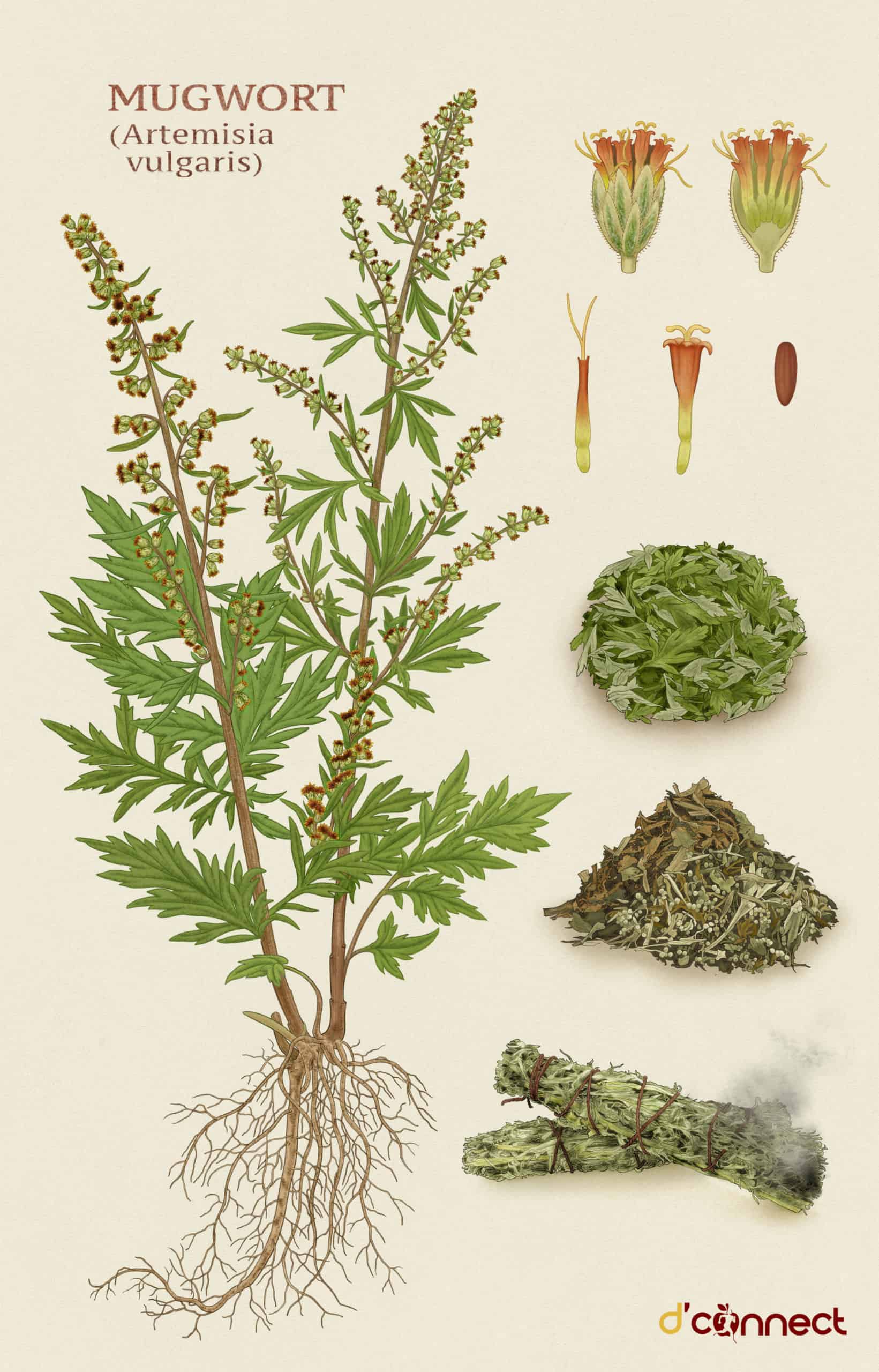
- Folium Artemisia Argyi (Scientific name)
- Artemisia vulgaris (Latin name)
- Ai Ye or Ai Cao (Chinese name)
Characteristics
Mugwort is visually characterised by deeply lobed, dark green foliage with a silver-grey underside, displaying a unique feathery appearance.
When crushed, they emit a distinct herbal aroma, described as both earthy and slightly bitter.
The flowers of mugwort are typically small and clustered together in dense, elongated structures called panicles or spikes. They can vary in colour, ranging from yellowish to greenish or reddish-brown.
Mugwort leaves have a long history of use in traditional medicine, known for their potential
- anti-inflammatory
- antimicrobial, and
- digestive properties
They are commonly used in the form of infusions, poultices, and topical preparations.
Mugwort leaves have also found applications in culinary practices, adding a subtle and aromatic flavour to various dishes.
Use
Mugwort leaves have been used for digestive support, menstrual regulation, pain, inflammation, and as a calming agent in herbal medicine practices worldwide.
Medicinal use
Throughout history to present day, mugwort leaves have been used for their therapeutic benefits and potential health-promoting effects.
In traditional Chinese medicine (TCM), mugwort leaves have been recognized for their ability to
- invigorate the blood
- promote digestion
- regulate menstrual cycles
They are often incorporated into herbal formulas aimed at treating gynaecological disorders and alleviating symptoms associated with menstruation.[3,4]
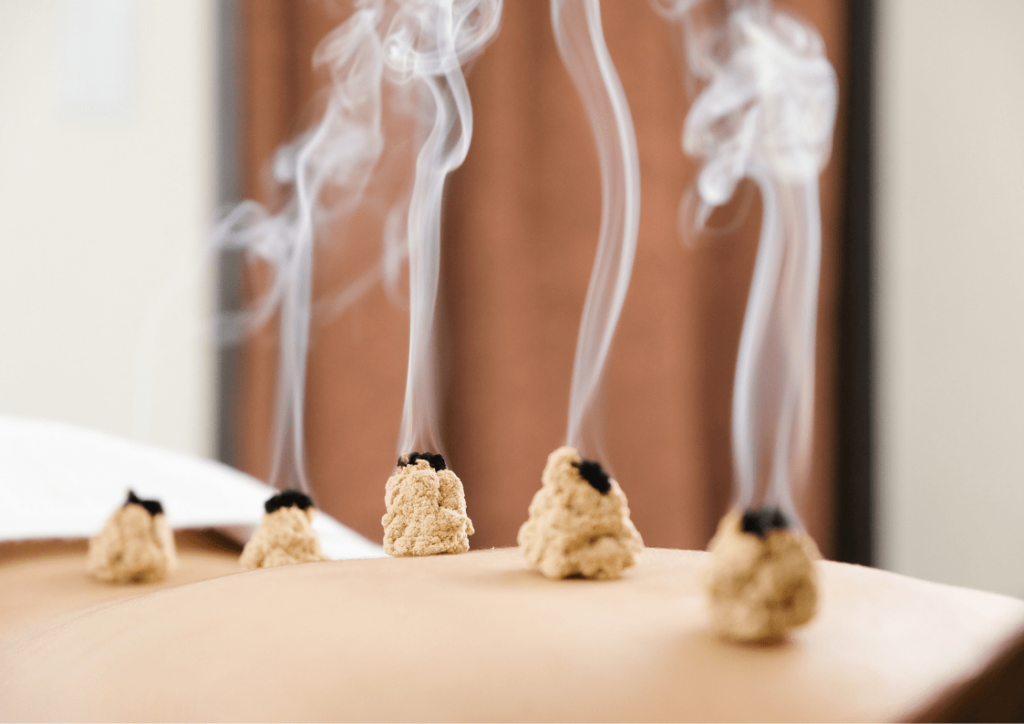
Mugwort leaf can stimulate circulation
It can also be used in hot foot baths for improving general health.
Research has provided insights into the pharmacological properties of mugwort leaves. Studies have highlighted their antimicrobial activity against a range of pathogens, including bacteria and fungi.[7]
Additionally, mugwort leaves exhibit anti-inflammatory effects, which have been attributed to their bioactive compounds.[8]
These anti-inflammatory properties make mugwort leaves a potential candidate for managing inflammatory conditions.
Mugwort leaves have a rich history of medicinal use, and scientific research continues to shed light on their therapeutic potential.
Culinary use
Mugwort leaves have a culinary presence in both Asian and European cuisines, adding distinct flavours to various dishes.
In China, mugwort leaves are used in steamed dishes, dumplings, and sticky rice cakes. They contribute a unique herbal taste, enhancing the overall flavour profile of these dishes.
In European cuisines, mugwort leaves are used as a seasoning in meat dishes, such as roast pork, imparting a subtle and aromatic flavour. Additionally, they were incorporated into stuffing recipes for poultry or used to infuse vinegar and liqueurs.
While the specific culinary uses of mugwort leaves may vary across different countries, they are cherished for their distinctive taste and contribution to regional dishes.
In terms of macronutrients, mugwort leaves offer carbohydrates, proteins, and dietary fibre. As for micronutrients, they provide essential minerals such as
- Calcium (for healthy bones, teeth and heart)
- iron
- Magnesium (for a great night of sleep)
- manganese
- phosphorus
- potassium
- Zinc (for immunity, skin health and libido)
Mugwort leaves also contain vitamins including
- vitamin A
- Vitamin C (Immunity and Collagen booster)
- vitamin E
- Vitamin B1 (Thiamine)
- Vitamin B2 (Riboflavin)
- Vitamin B3 (Niacin)
- vitamin B9 (Folate)
Additionally, mugwort leaves are a source of antioxidants, flavonoids, and volatile oils, which contribute to their potential health benefits.
It’s important to note that the exact composition and quantities of these nutrients may vary depending on the specific variety of mugwort and its growing conditions.
Health benefits
Mugwort leaves may offer potential health benefits, including anti-inflammatory and antioxidant properties, digestive support, menstrual cycle regulation, and antimicrobial effects.
Anti-inflammatory properties of Mugwort leaf
Research has shown that mugwort possesses anti-inflammatory effects. A study demonstrated the inhibitory activity of Artemisia argyi extracts on pro-inflammatory mediators.
It intensively suppressed the secretion of key pro-inflammatory factors and chemokines, including tumour necrosis factor-α (TNF-α), prostaglandin E2 (PGE2) and interleukin-1β (IL-1β).[8]
Mugwort has been widely used in China for the treatment of some inflammatory diseases, such as
- hepatitis
- gastric ulcers
- tumours
Hepatitis B virus (HBV) infection remains a major global health burden, due to the increasing risk of complications, such as cirrhosis and hepatocellular carcinoma.
A study carried in DHBV-infected ducks suggested that Artemisia argyi essential oil (AAEO) significantly reduced the liver DHBV level by 80%.[9]
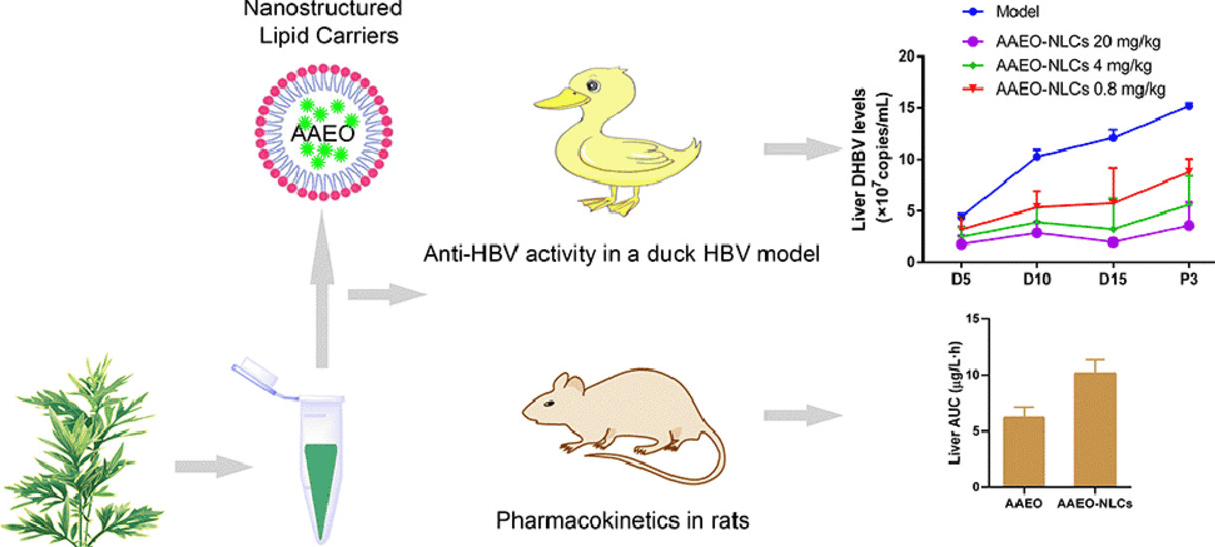
AAEO = Artemisia argyi essential oil, AAEO-NLC = Artemisia argyi essential oil loaded nanostructured lipid carriers
Antitumour properties of Mugwort leaf
One study in mice suggested that a polysaccharide obtained from Artemisia argyi had clear antitumour and immunomodulatory activities in vivo, and immunostimulatory effects might be one of the underlying mechanisms of its antitumour activity.[10]
Mugwort leaf has anti-tumour effects
Antimicrobial activity of Mugwort leaf
Mugwort has exhibited antimicrobial activity against various pathogens. A study found that the minimum inhibitory concentration (MIC) in Artemisia argyi essential simultaneous distillation-extraction (SDE) oil is 50% less than MICs of those in hydrodistilled and subcritical extracts, which showed that SDE oil has a higher antimicrobial activity than the other two oils.
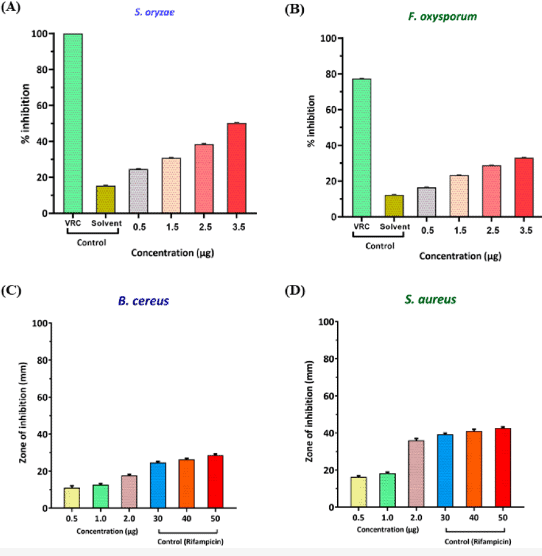
Source: Singh, N.B., et al. Phytochemical Composition and Antimicrobial Activity of Essential Oil from the Leaves of Artemisia vulgaris L. (2023)
Also, the study investigated the antimicrobial effects of Artemisia argyi essential oil and found it to be effective against foodborne bacteria by destroying the structure of cell walls, including Escherichia coli and Staphylococcus aureus.[11]
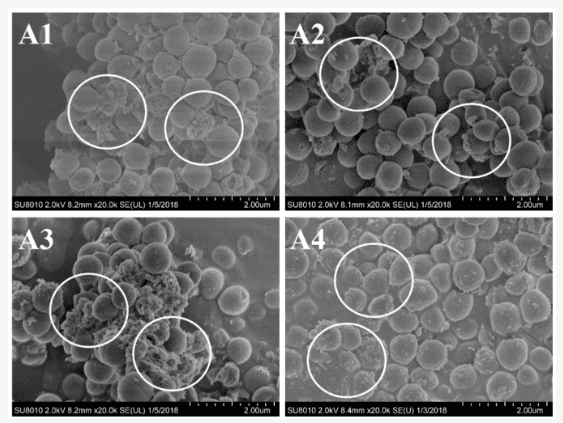
Gastrointestinal health and Mugwort leaf
Mugwort has been traditionally used for gastrointestinal issues.
A study investigated the gastroprotective effects of Artemisia argyi extract in rats with gastric ulcers induced by ethanol.
The results showed that the extract significantly reduced ulcer area and improved antioxidant enzyme activity, suggesting its potential in protecting the gastric mucosa.
The data showed no significant difference between the Artemisia argyi extract-treated group and the omeprazole-treated group.[1]
Another study suggested mugwort as a promising herbal medicine for inflammatory bowel disease (IBD) treatment, since it reduced the expression of inflammation-related proteins and genes in the colon and serum samples.
Mugwort leaf might be beneficial for IBS
The results showed that Artemisia argyi extract treatment relieved symptoms and pathogenesis of acute colitis including disease activity index (DAI), body weight loss, and histological changes in a DSS-induced colitis animal model.[12]

Antioxidant properties of Mugwort leaf
Some studies have demonstrated the antioxidant capacity of Artemisia argyi. For example, a study found that Folium Artemisiae Argyi exhibited a strong antioxidant capacity and enhanced stress resistance.
It improved the antioxidant defence system under acute stress. The average lifespan of nematodes in the group treated with 100 mg/L Folium Artemisia Argyi flavonoids (FAAF) was more than 30% longer than that in the control group (p < 0.01), suggesting that FAAF treatment could effectively improve the resistance of nematodes to both oxidative stress and heat stress in C. elegans.[13]
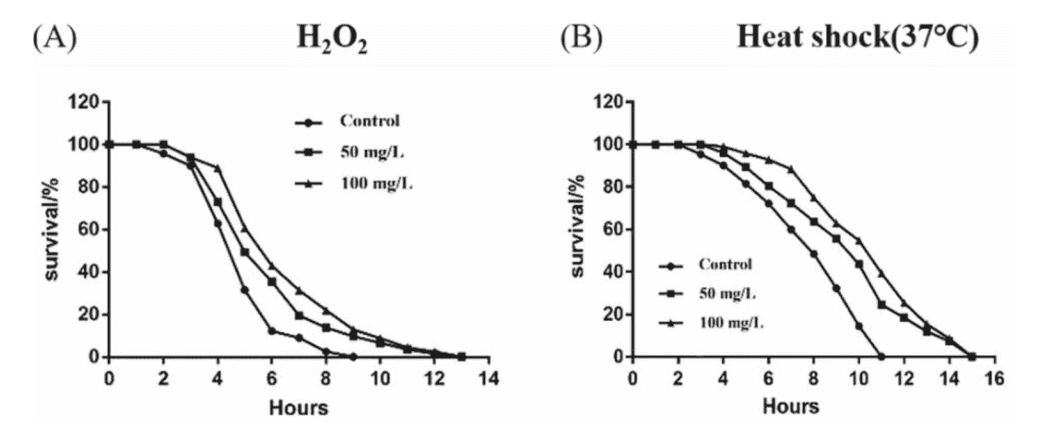
Anti-diabetic potential of Mugwort leaf
Research suggests that Artemisia argyi may have anti-diabetic effects. A study investigated the anti-hyperglycemic activity of Artemisia argyi extract in diabetic rats and found that it effectively reduced blood glucose levels and improved insulin sensitivity.
Artermisia argyi MeOH extract inhibited α-glucosidase activity in the mice’s small intestinal mucosa by 49.07% after 1 hour.
Furthermore, the α-glucosidase activity at 90 and 120 min had a significant reduction of 32.83% and 49.73%, respectively.[14]
Mugwort leaves could be potential herbal medicine and food supplement for treatment of diabetes mellitus.[15]
Sleep quality and Mugwort leaf
Mugwort leaf has shown promise in promoting sleep and enhancing dream experiences.
A study had mice inhale different concentrations of moxa smoke for 7 days. The frequency of autonomous locomotor activities was significantly lower in the LI group compared to the control group by 14% (P < 0.05).
The study also showed that the sleeping time increased more than 50% in the high concentration group (H1) compared to the control group.[16]
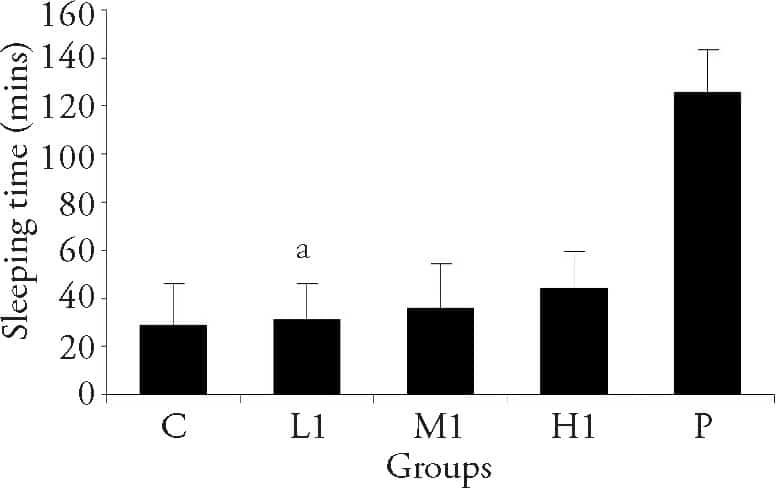
C = control; L1 = low concentration (0.4% moxa smoke for 20 min a day for 7 days); M1 = medium concentration (2% moxa smoke for 20 min a day for 7 days); H1 = high concentration (15% moxa smoke for 20 min a day for 7 days); P = positive control (10 mg/kg chlorpromazin).
Mugwort leaves contain volatile compounds that have been suggested to influence the sleep-wake cycle and facilitate lucid dreaming.
RELATED — Different types of sleep: which one do we need the most?
In traditional European medicine, mugwort leaves were used in dream pillows or placed under pillows to induce vivid dreams and enhance dream recall.[17]
Therapeutic dosage
The therapeutic dosage of mugwort (Artemisia argyi) can vary depending on the specific form of the herb and the intended use.
Herbal tea
To prepare a mugwort tea, steep 1 to 2 grams (approximately 1 to 2 teaspoons) of dried mugwort leaves in 250ml of hot water for about 10 to 15 minutes.
Capsules or Tablets
Mugwort is also available in capsule or tablet form. The recommended dosage can vary depending on the concentration and formulation.
It is advisable to follow the instructions provided on the product packaging or consult a qualified Chinese medicine practitioner for appropriate dosage guidance.
Essential oil
Mugwort essential oil is highly concentrated, and therefore, it should be used with caution. It is generally recommended to dilute the essential oil with a carrier oil, such as jojoba or coconut oil, before applying it topically.
The specific dilution ratio may vary, but a common guideline is to use 1 to 3 drops of mugwort essential oil per 1 teaspoon of carrier oil.
Moxibustion
This is a traditional Chinese medicine technique that involves burning of mugwort near specific acupuncture points or areas of the body.
Moxibustion is often used in combination with acupuncture, but it can also be used as a standalone therapy. It is commonly used to reduce pain, digestive disorders, menstrual irregularities, and certain immune-related conditions.
It’s important to consult with a qualified Chinese medicine practitioner or acupuncturist for personalized advice.
Safety concerns
Mugwort is generally considered safe when used appropriately, but it is important to be aware of potential safety concerns.
Allergic reactions
Mugwort belongs to the Asteraceae family, which includes ragweed and other allergenic plants. Individuals with known allergies to this plant family may also be allergic to mugwort.
Allergic reactions can range from mild symptoms like skin irritation or rash to more severe reactions like difficulty breathing or anaphylaxis.
Possible interactions with medications
Mugwort may interact with certain medications, including anticoagulants and antiplatelet drugs.
It may also have sedative properties and interact with substances that cause drowsiness.
Possible interactions with herbs and supplements
Mugwort may interact with other herbs or supplements that have similar actions or effects, such as
- cinnamon
- dried ginger
- evodia fruit
Interactions are not necessarily bad. In fact, some interactions can lead to positive outcomes. These possible interactions can vary depending on the specific herbs or supplements involved.
It is advisable to seek guidance from a qualified Chinese medicine practitioner to understand potential interactions and adjust dosages accordingly.
Summary

Note — feel free to share or download this illustration.
Related Questions
1. Who should be cautious when consuming Mugwort?
Pregnant or breastfeeding women and individuals with allergies to Asteraceae plants should get more information before trying Mugwort leaf.
Also, if you are having bleeding disorders, hormone-sensitive conditions, or kidney/liver disease, you should consult a qualified Chinese medicine practitioner before using mugwort.
2. Does mugwort have any psychotropic effects?
Mugwort is not known for strong psychotropic effects, but it has sedative properties, especially when used externally as moxibustion or in a warm footbath.
3. Where to find mugwort leaves?
If you are in New Zealand and looking for mugwort leaves, here are some potential places to find them:
- Asian herbal shops — they offer a variety of dried herbs, including mugwort leaves.
- Chinese medicine and acupuncture clinics — they often provide mugwort leaves for both oral intake and external use.
- In your garden — Mugwort is commonly grown in New Zealand and it might just be in your garden!
Caren is a qualified practitioner, with a Master’s degree of clinical medicine, Chinese medicine and acupuncture. She is also an ACC and veteran treatment provider, and registered weight management coach based in New Zealand. With over 10 years of experience, she has helped individuals with diverse physical and mental health issues.
Caren approaches her work and life with great passion, prioritising happiness and well-being. She believes in treating each individual as a whole, tailoring her treatments to meet their unique needs and circumstances. Her holistic approach merges the ancient wisdom of Chinese medicine with modern techniques, earning her recognition.
Beyond her professional pursuits, Caren actively promotes wellness within her community. She regularly conducts educational workshops, sharing her knowledge and empowering others to take charge of their health. Caren’s warm and empathetic nature creates a nurturing environment, providing support and inspiration throughout people’s healing journeys.
References
(1) Shuang Li, Shaobo Zhou, Wei Yang, Dali Meng. (2018). Gastro-protective effect of edible plant Artemisia argyi in ethanol-induced rats via normalizing inflammatory responses and oxidative stress. Journal of Ethnopharmacology. Retrieved from https://www.sciencedirect.com/science/article/abs/pii/S0378874117323814
(2) James David Adams, Cecilia Garcia, Garima Garg. (2012). Mugwort (Artemisia vulgaris, Artemisia douglasiana, Artemisia argyi) in the Treatment of Menopause, Premenstrual Syndrome, Dysmenorrhea and Attention Deficit Hyperactivity Disorder. Chinese Medicine.
(3) Chaoqin Gou, Jing Gao, Chenxi Wu, Dingxi Bai, Hongyuan Mou, Xiaolin Hou, Xia Zhao. (2016). Moxibustion for Primary Dysmenorrhea at Different Interventional Times: A Systematic Review and Meta-Analysis. Evidence-Based Complementary and Alternative Medicine. Retrieved from https://www.hindawi.com/journals/ecam/2016/6706901/
(4) Pengfei Zhang, Huimin Sun, Dexin Yang, Yuanyuan Wang, Jiejuan Cheng, Changchun Zeng. (2023). Oral Administration of Artemisia argyi Polysaccharide Increases Estrogen Level and Maintains Blood Lipid Homeostasis in Ovariectomized Rats. Pharmacology.
(5) Hongyong Deng, Xueyong Shen. (2013). The Mechanism of Moxibustion: Ancient Theory and Modern Research. Evidence-Based Complementary and Alternative Medicine. Retrieved from https://www.hindawi.com/journals/ecam/2013/379291/
(6) Kyungsun Han, Mikyung Kim, Eun-Jung Kim, Yeon-Cheol Park, Ojin Kwon, Ae-Ran Kim, Hyo-Ju Park, Yang-Chun Park, Jung Hyo Cho, Joo-Hee Kim, Jun-Hwan Lee. (2021). Moxibustion for treating cancer-related fatigue: A multicenter, assessor-blinded, randomized controlled clinical trial. Cancer Medicine. Retrieved from https://onlinelibrary.wiley.com/doi/10.1002/cam4.4020
(7) Haiping Gu, Shikai Zhang, Lin Liu, Zhengyou Yang, Fengchun Zhao, Yuan Tian. (2022). Antimicrobial Potential of Endophytic Fungi From Artemisia argyi and Bioactive Metabolites From Diaporthe sp. AC1. Front Microbiol. Retrieved from https://www.frontiersin.org/articles/10.3389/fmicb.2022.908836/full
(8) Laibin Zhang, Huihui Zhu, Limin Guo, Jieli Lv. (2020). Artemargyinolide E, a new sesquiterpene lactone from Artemisia argyi inhibits inflammatory responses via down-regulating NF-κB signaling pathway. Phytochemistry Letters.
(9) Zhuangli Zhang, Xiaoqian Fu, Yarong Wang, Jian Wang, Shiyang Feng, Zhihong Zhao, Liyun Zheng, Jingmin Zhang, Xiaojun Zhang, Youmei Peng. (2023). In vivo anti-hepatitis B activity of Artemisia argyi essential oil-loaded nanostructured lipid carriers. Study of its mechanism of action by network pharmacology and molecular docking. Phytomedicine. Retrieved from https://www.sciencedirect.com/science/article/abs/pii/S094471132300209X?via%3Dihub
(10) Xiaoli Bao, Huihui Yuan, Chengzhong Wang, Jinjin Liu, Minbo Lan. (2013). Antitumor and immunomodulatory activities of a polysaccharide from Artemisia argyi. Carbohydr Polym.
(11) Xiao Guan, Depeng Ge, Sen Li, Kai Huang, Jing Liu, Fan Li. (2019). Chemical Composition and Antimicrobial Activities of Artemisia argyi Lévl. et Vant Essential Oils Extracted by Simultaneous Distillation-Extraction, Subcritical Extraction and Hydrodistillation. Molecules. Retrieved from https://www.mdpi.com/1420-3049/24/3/483
(12) Ji Min Shin, Yang-Ju Son, In Jin Ha, Saruul Erdenebileg, Da Seul Jung, Dae-Geun Song, Young Sik Kim, Sang Min Kim, Chu Won Nho. (2022). Artemisia argyi extract alleviates inflammation in a DSS-induced colitis mouse model and enhances immunomodulatory effects in lymphoid tissues. BMC Complementary Medicine and Therapies. Retrieved from https://bmccomplementmedtherapies.biomedcentral.com/articles/10.1186/s12906-022-03536-x
(13) Qian Hu, Zegan Liu, Yujie Guo, Shan Lu, Hongzhi Du, Yan Cao. (2021). Antioxidant capacity of flavonoids from Folium Artemisiae Argyi and the molecular mechanism in Caenorhabditis elegans. Journal of Ethnopharmacology. Retrieved from https://www.sciencedirect.com/science/article/abs/pii/S0378874121006279?via%3Dihub
(14) Jianqi Xiao, Wenyuan Liu, Haopeng Sun, Wei Li, Kazuo Koike, Takashi Kikuchi, Takeshi Yamada, Da Li, Feng Feng, Jie Zhang. (2019). Bioactivity-based analysis and chemical characterization of hypoglycemic and antioxidant components from Artemisia argyi. Bioorganic Chemistry. Retrieved from https://www.sciencedirect.com/science/article/abs/pii/S0045206819304845?via%3Dihub
(15) Yaqing Chang, Weixu Fan, Huan Shi, Xie Feng, Dan Zhang, Lei Wang, Yuguang Zheng, Long Guo. (2022). Characterization of phenolics and discovery of α-glucosidase inhibitors in Artemisia argyi leaves based on ultra-performance liquid chromatography-tandem mass spectrometry and relevance analysis. Journal of Pharmaceutical and Biomedical Analysis. Retrieved from https://www.sciencedirect.com/science/article/abs/pii/S0731708522004034?via%3Dihub
(16) Jia Yang, Xiaojun Zheng, Ran Jin, Li Han, Lue Ha, Jun Li, Lei Wang, Ping Liu, Zhusheng Chu, Chang Huang, Hongsheng Chang, Lixing Lao, Baixiao Zhao. (2016). Effect of moxa smoke produced during combustion of Aiye (Folium Artemisiae Argyi) on behavioral changes in mice inhaling the smoke. Journal of Traditional Chinese Medicine. Retrieved from https://www.sciencedirect.com/science/article/pii/S0254627217300195?via%3Dihub
(17) Michael Schredl. (2012). Abstracts of the 29th Annual Conference of the International Association for the Study of Dreams June 22 – June 26, 2012 Berkeley, California, USA. International Journal of Dream Research.

